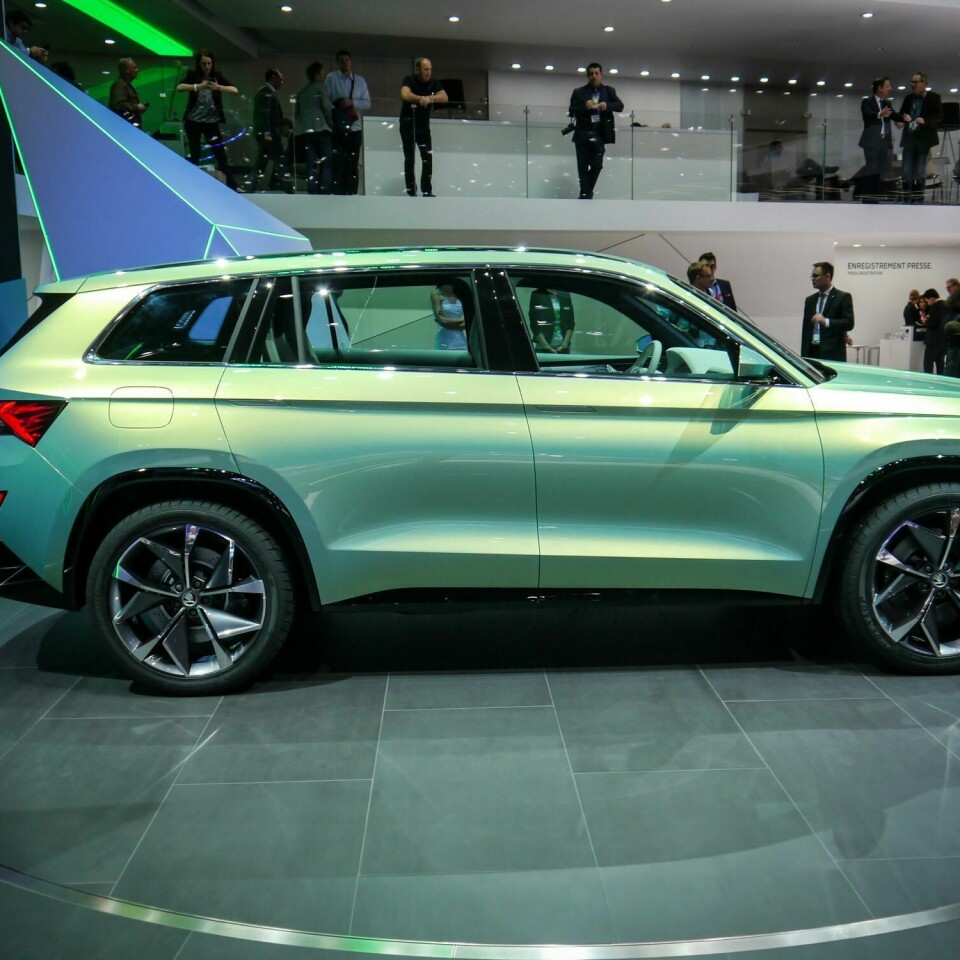
Jozef Kabaň on Skoda’s future, worries of excessive consumerism and his team’s legacy
25 years after Skoda was bought by the VW Group we speak to its Chief designer Jozef Kabaň
As Skoda celebrates 25 years of Volkswagen Group ownership, which has seen an unprecedented increase in sales and the quality of its products, we caught up with chief designer, Jozef Kabaň, to discuss his vision for the Czech brand’s future.
The immediate future lies in the expansion of the brand’s crossover range beyond the ageing but successful Yeti, beginning with a larger car previewed with the VisionS concept shown at the Geneva motor show. “We already have the Yeti but it’s important that, with the bigger SUV, we restart. What we were working on was to keep the brand in one look, but give enough space for each car to have an identity, and also to work on the identity between the normal cars and the SUVs.”

Skoda Vision S at the Geneva motor show kick-starts brand’s SUV/crossover push
What continues is the faceted design language inspired by the glass industry that was so prevalent around Skoda’s Mladá Boleslav base. But, when many of the brands within the Volkswagen Group are being accused of converging towards a rather ‘sharp’ aesthetic, does Kabaň share these concerns?
“It’s not easy to make sharp lines – it’s very challenging. I believe that we have to be careful that we don’t go too over the edge. If I can imagine how a Skoda should look in the future it’s less a machine and closer to the human. For example in the lights we have these lines which are a something like eyelashes. It’s not about showing how many LEDs you have or how technological it is. I do not care too much about this, it’s more about what it does to your feelings.
“Of course the first thing is that it has to work and be safe but if it makes you feel somehow special, that’s the right way. We are getting to a point where the cars are getting more and more different and I hope that in the future it will be more, because it makes no sense to have all of them [brands] over each other.”

Vision S concept features stylised eyelashes
But still the idea of glass as an inspiration has legitimacy, particularly as the brand expands beyond its traditional European market: “Glass is not just Czech, glass is in every family at home – it gives you a certain quality and Chinese love it as much as we do.”
China is now Skoda’s largest market with 18,500 cars delivered in February alone. “We have the Volkswagen studio [in China] with a couple of guys working only for Skoda. It’s incredible how motivated the people are there and as design chief I enjoy it when people just love to do something. Chinese want, they want and they want. Every time they visit us or we go to China it becomes clear that this is one team and it becomes much more about the people than where they are from. Even in our European studio we have 20 nationalities and already this is very international – the chance that the people in Skoda understanding what is happening around the world is already pretty high.”

Kaban with the Skoda Museum’s extensive collection
And yet, while Kabaň is all too aware of the responsibility of creating new products: “Of course we talk about the cars but many people’s jobs depend on us. And when you walk through the museum and you see the brand is so many years old, you better think twice about what you do because we are only a certain part of that time. Imagine if there is a book about the brand and there are only a few pages about the people who are working on these cars – what should be written in there? It’s not about your own echo – that’s not important because in the end you find out that it’s much better if many people are happy rather than just yourself.”
This considered, human-centric approach creates the internal conflict that so many senior design managers confront when balancing creativity with the ever-increasing pressures of sales figures: “Today it seems that there is nothing more important than money and profit and I wish that there was also a bit more quality. There are many cars where I ask ‘who actually needs them?’. They are getting cheaper and cheaper and maybe one day somebody takes them but for what? Just to make our world full of things that nobody needs?”

Kaban is excited about how a connected, autonomous Skoda might appear
However he believes that the upcoming challenge of creating new experiences in autonomous cars will provide a new impetus for creativity: “Autonomous driving will definitely be a big challenge and something that will change the perspective of how we see cars. It will happen, there is no doubt about it. I personally like to drive cars but I know there will be lots of positive things when they come.
“I definitely believe the future will not be boring. We have a lot to do and wow what a challenge. I hope that the car could be like your home. Home is something very special but it has one disadvantage that it’s fixed in one place. But a car could be a home that you can take with you and there’s an opportunity to do something like that. If you get the right atmosphere, the right lighting – then you create the feeling of your own home and that could be something very special for us. I believe that we will be one of the brands which could prove that space – its something that we have under control.”



